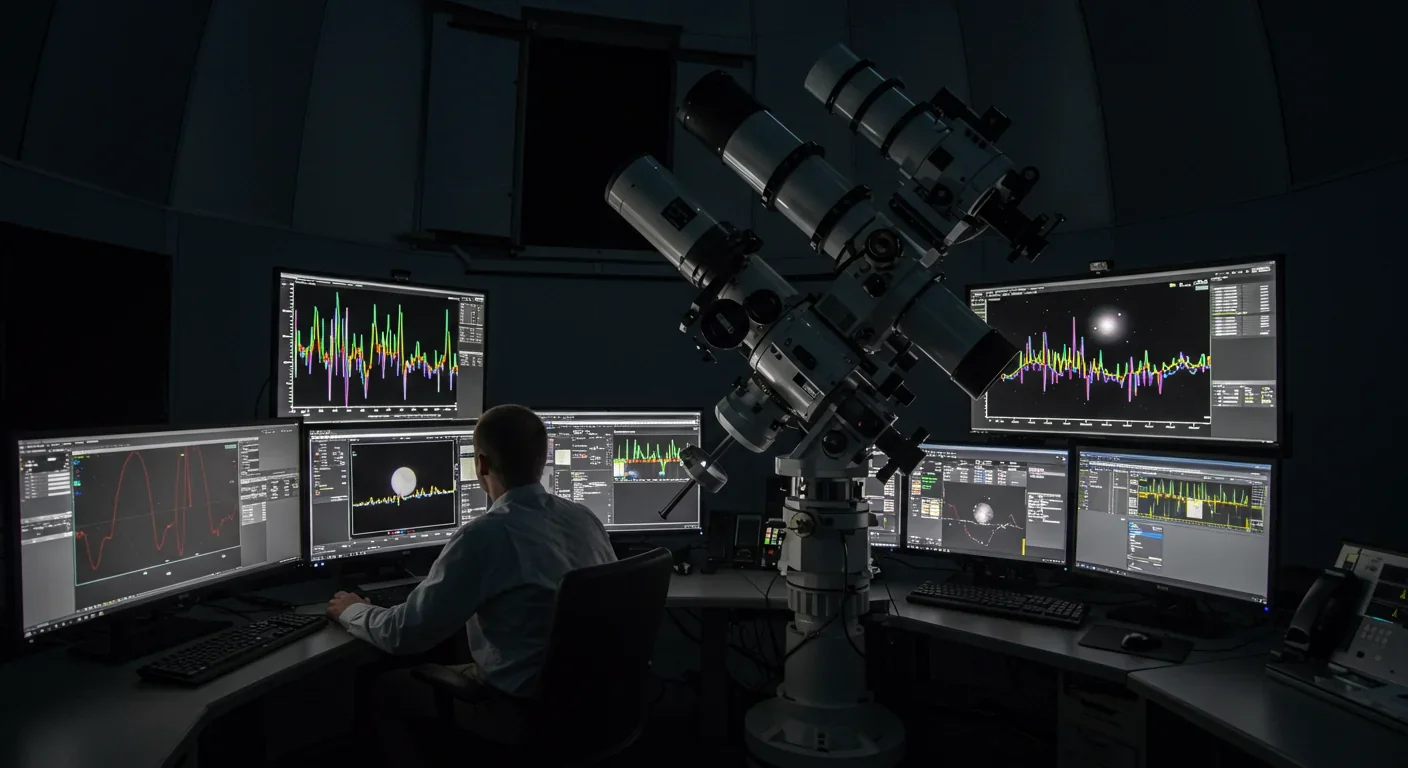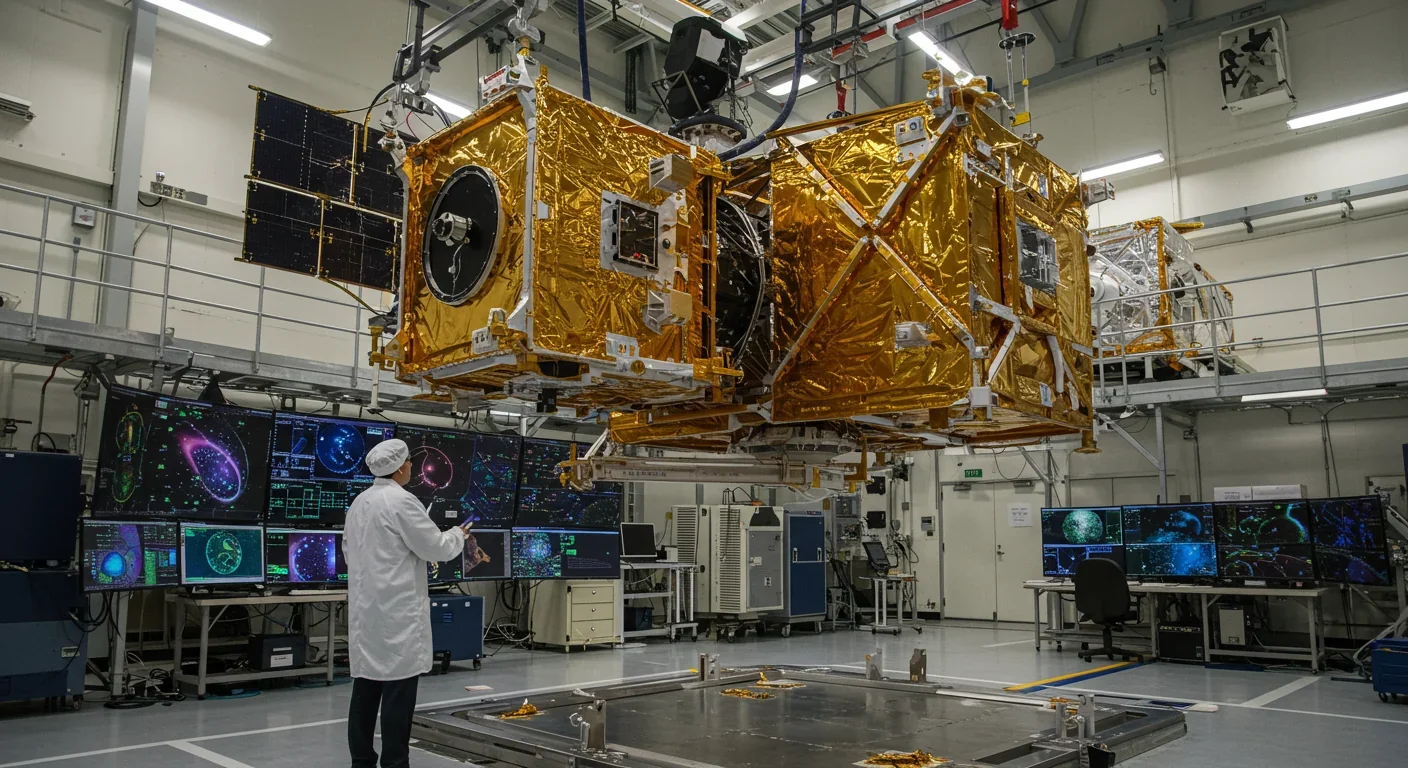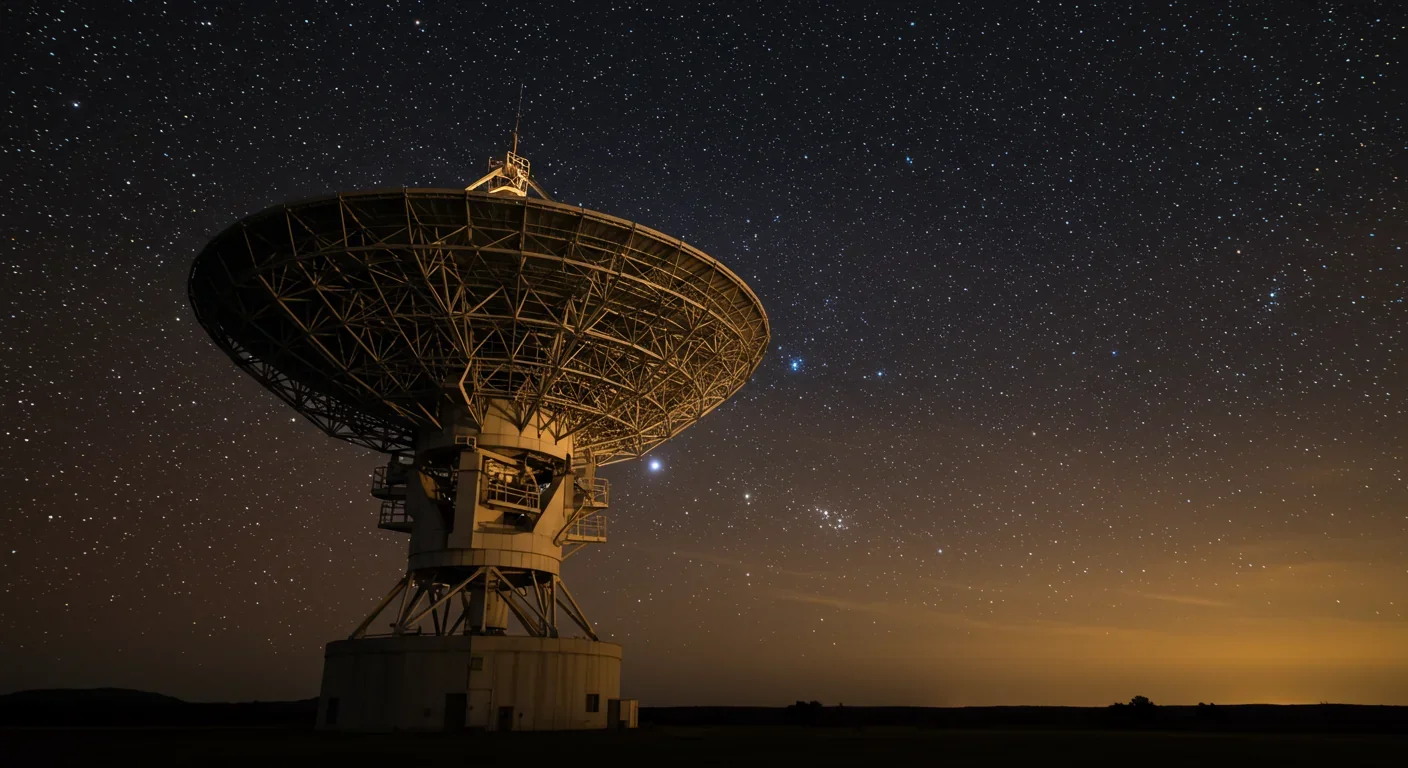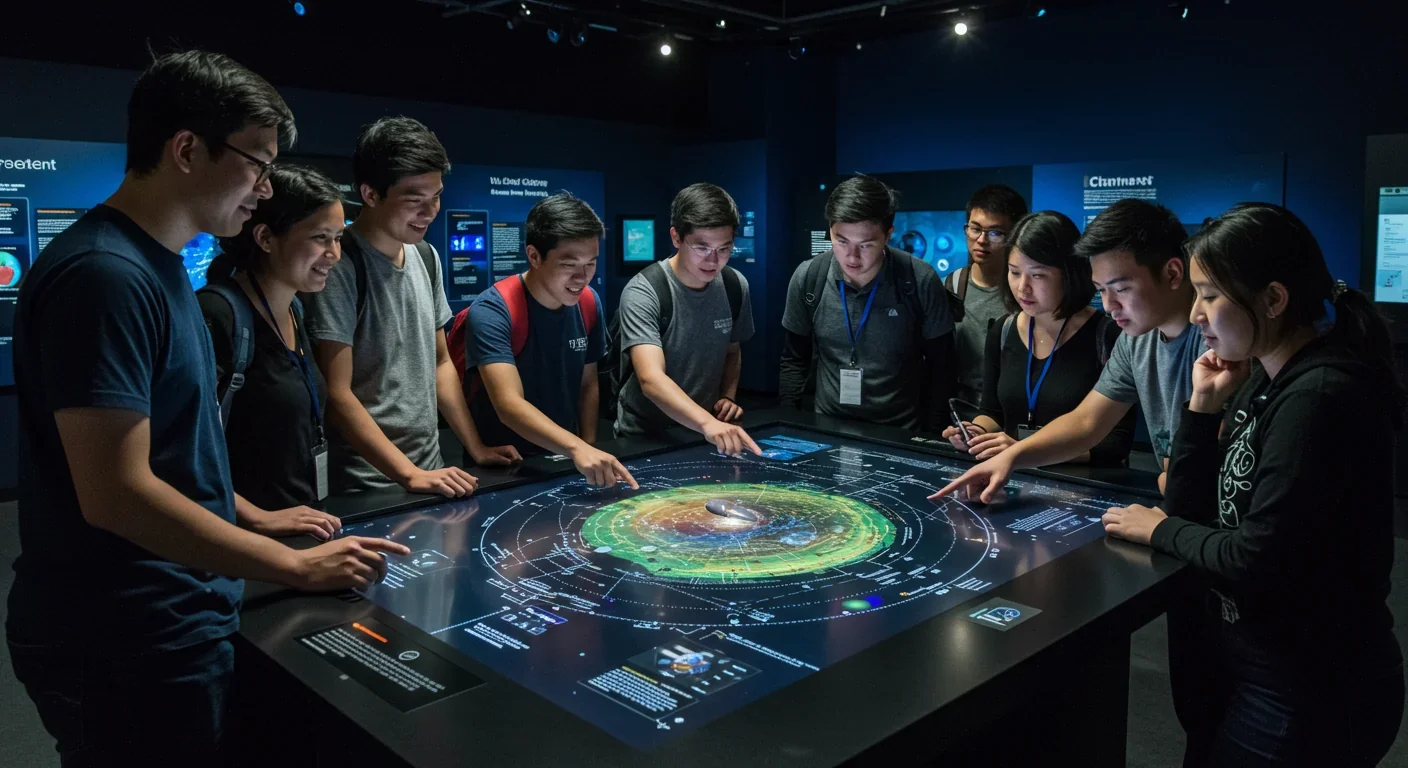White Dwarf Spectroscopy Reveals Destroyed Exoplanets

TL;DR: Recent high-precision measurements of the cosmic microwave background reveal puzzling anomalies that could indicate our universe collided with others during its infancy, though scientists debate whether these patterns represent genuine multiverse evidence or statistical coincidences.

By 2030, scientists expect to have definitive answers about one of cosmology's most provocative questions: does our universe have siblings? The answer might be hiding in the oldest light astronomers can observe—radiation that's been traveling through space for 13.8 billion years. Recent high-precision measurements of this cosmic fossil have revealed puzzling patterns that don't quite fit our understanding of a single, isolated universe. These anomalies are subtle, controversial, and potentially revolutionary.
The cosmic microwave background is essentially the universe's baby photo—a snapshot of conditions roughly 380,000 years after the Big Bang, when the cosmos first became transparent to light. Before that moment, the universe was so hot and dense that photons couldn't travel freely. They scattered constantly off charged particles in a foggy plasma that filled all of space.
When temperatures dropped below about 3,000 Kelvin, electrons and protons combined to form neutral hydrogen. This "recombination" cleared the fog almost instantly in cosmic terms. Light that had been trapped suddenly streamed freely through space. That light, cooled by the universe's expansion to just 2.7 Kelvin above absolute zero, now bathes Earth from every direction. It's the oldest electromagnetic radiation we can detect—the earliest possible photograph of the cosmos.
Scientists measure this radiation using satellites positioned far from Earth's interference. The European Space Agency's Planck satellite, launched in 2009, measured temperature fluctuations in the CMB with a precision of about two parts per million. NASA's earlier Wilkinson Microwave Anisotropy Probe (WMAP) paved the way with its own groundbreaking observations starting in 2001.
These missions produced maps showing the CMB isn't perfectly uniform. Tiny temperature variations—about one part in 100,000—reveal density differences in the early universe. Those subtle wrinkles eventually grew into the cosmic web of galaxies we see today. The pattern of these fluctuations tells us about the universe's composition, age, and fate.
Here's where things get interesting. The CMB mostly matches predictions from our standard cosmological model with extraordinary accuracy. This model describes a universe that's flat, homogeneous on large scales, and governed by general relativity and quantum mechanics. But several persistent anomalies have emerged that no one can fully explain.
The most famous is the "Cold Spot"—a region roughly 1.8 billion light-years across that's about 70 microkelvins cooler than expected. It sits in the constellation Eridanus and was first clearly identified in WMAP data, then confirmed by Planck. Statistical analysis suggests there's only about a one-in-50 chance such a large, cold region would appear randomly in our observable universe.
Then there's what cosmologists call the "Axis of Evil"—a somewhat tongue-in-cheek name for an unsettling pattern. The largest-scale temperature variations in the CMB appear to align with each other and with the plane of our solar system. This shouldn't happen in a universe where structure formed randomly. It's as if someone drew a line through space that the earliest ripples in the cosmos decided to respect.
Another puzzle emerged in 2024 when researchers noticed tensions in the cosmic dipole—an asymmetry in the CMB caused by our motion through space. The dipole pattern created by our galaxy's movement doesn't perfectly match other large-scale structures. Some scientists interpret this as evidence that the universe might not be as uniform on the largest scales as we thought.
Most cosmologists initially assumed these were statistical flukes or artifacts of our measuring instruments. As more data accumulated, those explanations became harder to maintain. The anomalies persisted. They demanded explanation.

Enter the multiverse hypothesis. In its simplest form, this suggests our observable universe is just one region in a vastly larger cosmos—possibly infinite—containing many separate universes. These other universes might have different physical laws, constants, or initial conditions.
The idea sounds like science fiction, but it emerges naturally from several well-respected physical theories. Eternal inflation, for instance, proposes that the rapid expansion immediately after the Big Bang never completely stopped. Instead, different regions stopped inflating at different times, creating bubble universes with distinct properties. Our universe would be one such bubble.
String theory and its variants predict extra spatial dimensions and a "landscape" of possible vacuum states—perhaps 10^500 different configurations. Each configuration would produce a universe with unique characteristics. This landscape provides a natural mechanism for generating multiple universes.
How might this connect to CMB anomalies? If our universe collided with or was influenced by another universe in the distant past, that interaction could leave marks in the pattern of temperature fluctuations we observe today. Think of it like rings on a pond's surface when two objects drop into the water—the interference pattern reveals the collision.
Some physicists have proposed that the Cold Spot might be a bruise—evidence of our universe bumping against another during the inflationary epoch. The collision would have injected or removed energy in a localized region, creating an anomalous pattern that stretched as space expanded.
Not everyone buys this explanation. Many cosmologists argue we're seeing patterns in noise, finding meaning where none exists. Human brains evolved to detect patterns—that ability helped our ancestors survive. But it also makes us prone to seeing faces in clouds and conspiracies in coincidences.
The statistical significance of CMB anomalies depends heavily on how you analyze the data. When you look for anomalies, you inevitably find something unusual—that's the nature of random distributions. The question is whether what you found is unusual enough to rule out chance. With the CMB, we're essentially looking at one universe, one realization of cosmic dice rolls. We don't have other universes to compare against.
Alternative explanations for the anomalies don't require exotic physics. The Cold Spot might result from a supervoid—an exceptionally large region of space with below-average density. Photons passing through such a void lose energy through a process called the integrated Sachs-Wolfe effect, potentially creating a cold region in the CMB.
The Axis of Evil might be a selection effect related to how we process CMB data. Removing foreground contamination from our galaxy and accounting for our motion through space requires making assumptions. Different assumptions yield different results. Some researchers argue the apparent alignment disappears when you account for these systematic effects properly.
Recent studies also suggest alternative cosmological models might explain some anomalies without invoking multiple universes. Modified gravity theories, different dark energy equations of state, or even errors in our distance measurements could account for what we observe.
The debate reveals how cosmology operates at its limits. Unlike laboratory physics, cosmologists can't run controlled experiments or create multiple universes for comparison. We observe the universe we have and try to infer its history and nature from that single example.
This makes distinguishing between competing theories extraordinarily difficult. The multiverse hypothesis makes few testable predictions because by definition, other universes are causally disconnected from ours. If we can never observe them directly, how can we prove they exist?
Some philosophers of science argue the multiverse idea isn't really science at all—it's more like metaphysics dressed in mathematical clothing. Science, they claim, requires falsifiable predictions. If no conceivable observation could disprove the multiverse hypothesis, it doesn't meet this criterion.
Others counter that we shouldn't artificially constrain our theories based on philosophical preferences. If our best mathematical descriptions of reality naturally produce multiple universes as a consequence, we should take that seriously. The multiverse might be an unavoidable implication of theories we accept for other reasons.
The stakes go beyond abstract philosophy. If the multiverse exists, it could resolve the "fine-tuning" problem that has puzzled physicists for decades. The fundamental constants of nature—the strength of gravity, the mass of the electron, the cosmological constant—appear precisely calibrated to allow complex structures like stars, planets, and life to form.
Change any of these values by a small amount and the universe becomes hostile to life as we know it. Stars might not form, atoms might not be stable, or space might expand so rapidly that galaxies never coalesce. In a multiverse containing every possible combination of physical constants, we necessarily find ourselves in one of the rare universes capable of supporting observers. It's anthropic reasoning—we observe what we observe because we couldn't exist in a universe with different properties.

Next-generation experiments will provide crucial new data. The Simons Observatory in Chile, the CMB-S4 project across multiple sites, and proposed space missions will map the CMB with even greater precision. They'll particularly focus on polarization patterns—the orientation of electromagnetic waves in the CMB.
These polarization measurements can reveal gravitational waves from the inflationary epoch that might have been generated by universe collisions. They'll also test alternative explanations for existing anomalies by mapping larger areas of the sky with better sensitivity.
Advances in theoretical physics might suggest new signatures to look for. If string theory or quantum gravity research identifies specific predictions of multiverse models, observers will know what patterns would confirm or rule out those scenarios.
Machine learning is also transforming cosmology. Neural networks can find subtle patterns in CMB data that human-designed statistics might miss. These tools might reveal correlations that point toward or away from multiverse interpretations.
The multiverse debate touches on profound questions about existence, meaning, and humanity's place in the cosmos. For centuries, each scientific revolution has pushed humans further from the center of creation. Earth isn't the center of the solar system. The Sun is one of billions of stars. The Milky Way is one of billions of galaxies.
If the multiverse is real, our entire observable universe—everything we can see or will ever see, containing hundreds of billions of galaxies spanning 93 billion light-years—would be an infinitesimal fraction of reality. We'd inhabit not just one small planet, but one small universe among countless others.
Some find this prospect intellectually exhilarating—a vindication of the cosmos's astonishing fecundity. Others find it vertiginous, stripping meaning from existence by making everything arbitrary. If all possible universes exist somewhere, what makes anything special?
The answer might be that local meaning doesn't depend on cosmic uniqueness. The fact that love, art, discovery, and suffering matter to us doesn't diminish if they're replicated in other universes. What makes your life meaningful isn't whether someone in a parallel universe is living an identical life—it's the immediate reality of your experiences and relationships.
The CMB anomalies remain unresolved. They might be evidence of other universes, or they might be statistical coincidences amplified by human pattern-seeking. Or they might point toward something even more unexpected—new physics that hasn't entered our equations yet.
What's certain is that the universe surprises us. Just when we think we've figured it out, new observations reveal how much we don't know. The CMB has already rewritten cosmology once by confirming the Big Bang model and revealing the universe's composition and age. It might rewrite cosmology again by proving reality extends far beyond what we can see.
George Smoot, who won the Nobel Prize for discovering CMB anisotropies, spent his career showing that tiny temperature variations reveal cosmic history. He understood that the universe writes its biography in light—we just have to learn to read it. The question now is whether that biography mentions other chapters, other stories, other universes sharing space with our own.
As instruments improve and theories evolve, we edge closer to answers. The oldest light in the universe might yet reveal whether we're alone in the cosmos—not just as intelligent beings on one planet, but as an entire universe among many. That would be the ultimate Copernican revolution, and it's encoded in radiation that's been traveling toward us since before Earth, the Sun, or even the Milky Way existed in their current forms.
The answer is already out there, written in the sky, waiting for us to decode it.

Over 80% of nearby white dwarfs show chemical fingerprints of destroyed planets in their atmospheres—cosmic crime scenes where astronomers perform planetary autopsies using spectroscopy. JWST recently discovered 12 debris disks with unprecedented diversity, from glassy silica dust to hidden planetary graveyards invisible to previous surveys. These stellar remnants offer the only direct measurement of exoplanet interiors, revealing Earth-like rocky worlds, Mercury-like metal-rich cores, and ev...

Hidden mold in homes releases invisible mycotoxins—toxic chemicals that persist long after mold removal, triggering chronic fatigue, brain fog, immune dysfunction, and neurological damage. Up to 50% of buildings harbor mold, yet most mycotoxin exposure goes undetected. Cutting-edge airborne testing, professional remediation, and medical detox protocols can reveal and reverse this silent epidemic, empowering individuals to reclaim their health.

Data centers consumed 415 terawatt-hours of electricity in 2024 and will nearly double that by 2030, driven by AI's insatiable energy appetite. Despite tech giants' renewable pledges, actual emissions are up to 662% higher than reported due to accounting loopholes. A digital pollution tax—similar to Europe's carbon border tariff—could finally force the industry to invest in efficiency technologies like liquid cooling, waste heat recovery, and time-matched renewable power, transforming volunta...

Transactive memory is the invisible system that makes couples, teams, and families smarter together than apart. Psychologist Daniel Wegner discovered in 1985 that our brains delegate knowledge to trusted partners, creating shared memory networks that reduce cognitive load by up to 40%. But these systems are fragile—breaking down when members leave, technology overwhelms, or communication fails. As AI and remote work reshape collaboration, understanding how to intentionally build and maintain ...

Mass coral spawning synchronization is one of nature's most precisely timed events, but climate change threatens to disrupt it. Scientists are responding with selective breeding, controlled laboratory spawning, and automated monitoring to preserve reef ecosystems.

Your smartphone isn't just a tool—it's part of your mind. The extended mind thesis argues that cognition extends beyond your skull into devices, AI assistants, and wearables that store, process, and predict your thoughts. While 79% of Americans now depend on digital devices for memory, this isn't amnesia—it's cognitive evolution. The challenge is designing tools that enhance thinking without hijacking attention or eroding autonomy. From brain-computer interfaces to AI tutors, the future of co...

Transformers revolutionized AI by replacing sequential processing with parallel attention mechanisms. This breakthrough enabled models like GPT and BERT to understand context more deeply while training faster, fundamentally reshaping every domain from language to vision to multimodal AI.